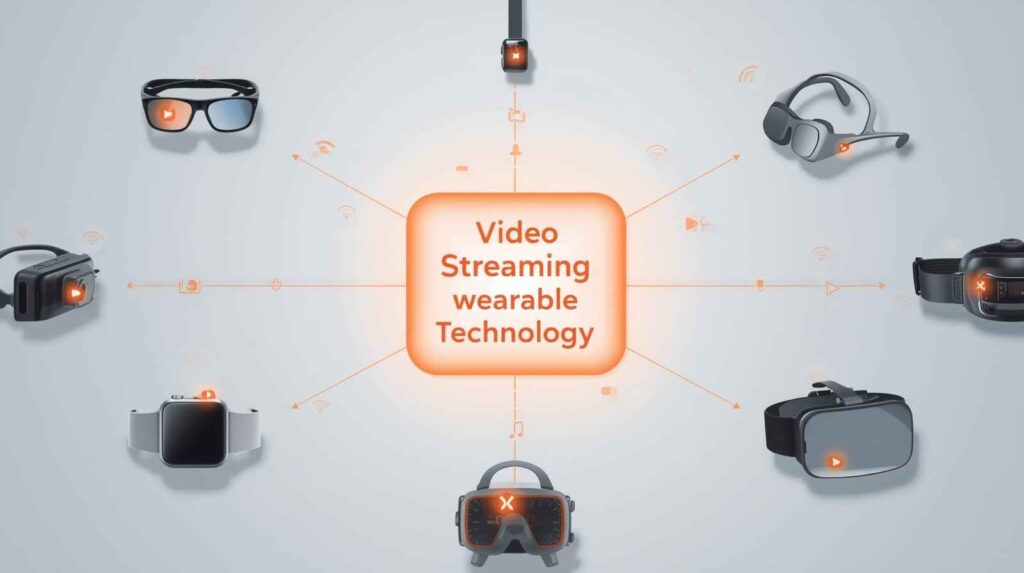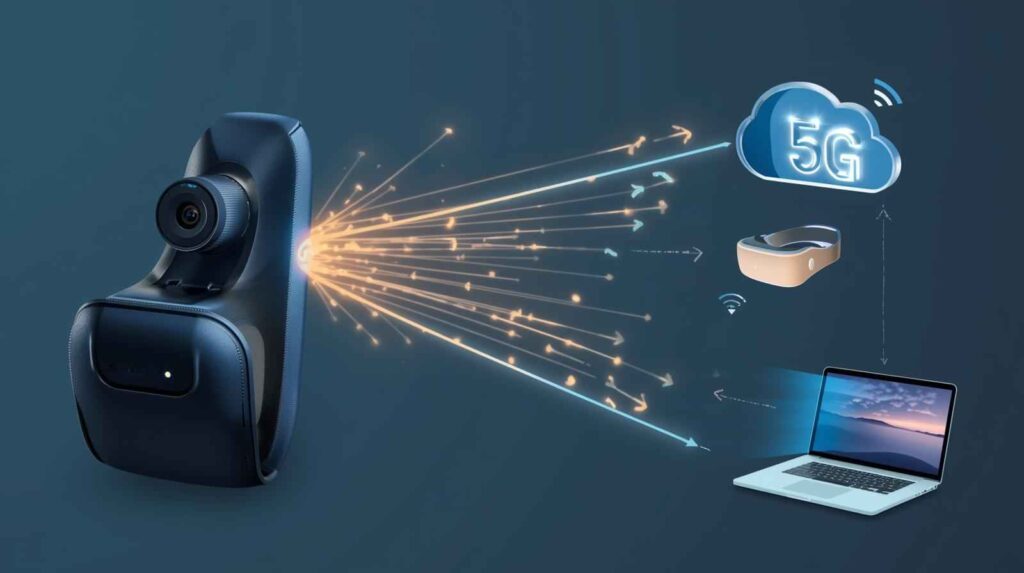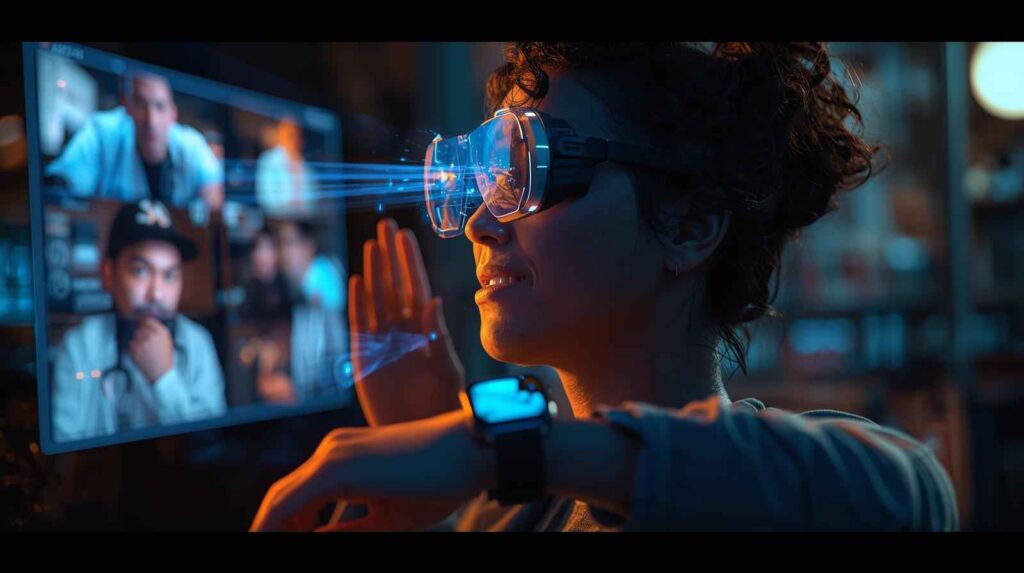Video Streaming Wearable Technology
Let’s be honest , the idea of watching live video or streaming content directly from your wrist, glasses, or even clothing would’ve sounded like science fiction a decade ago. Today, it’s an exciting reality. Video streaming wearable technology isn’t just a fancy add-on anymore; it’s redefining how we consume, create, and share digital content on the go. From fitness tracking to live sports broadcasting and telemedicine, wearables with built-in streaming features are quietly shaping the next big wave in digital experience.
I remember the first time I tried a pair of smart glasses capable of streaming live video. It felt like stepping into the future , a mix of convenience and curiosity. I could record, stream, and interact without ever pulling out my phone. Sure, the quality wasn’t perfect, but it made me realize how close we were to merging physical life with digital immersion. It wasn’t just about watching; it was about living the experience.
In this article, we’ll explore how video streaming wearable technology works, why it’s becoming a mainstream phenomenon, and what industries are transforming because of it. You’ll also learn about the challenges, misconceptions, and emerging trends shaping its future. Whether you’re a tech enthusiast, business owner, or someone curious about the next big thing in connectivity , you’re about to get a front-row seat to one of the most exciting evolutions in modern tech.
So grab your coffee (or your smartwatch), and let’s dive into a world where your favorite shows, live feeds, and even work meetings fit seamlessly onto your body.

What Is Video Streaming Wearable Technology?
Video streaming wearable technology refers to smart devices that can capture, transmit, and display live or recorded video directly from the user’s body. Think of smart glasses, AR/VR headsets, smartwatches with cameras, or body-mounted action cams that can stream directly to platforms like YouTube, Twitch, or private business networks.
Unlike traditional streaming devices such as phones or laptops, wearables allow hands-free operation,giving users total mobility while still staying connected. They blend hardware, AI-driven software, cloud integration, and advanced sensors to deliver real-time video experiences.
In short: it’s the next step in personal and professional connectivity , one that makes sharing perspective as easy as blinking.

The Core Components Behind the Magic
To understand the technology, it helps to break down its main components:
- Camera Sensors: Compact yet powerful, these capture high-quality video without bulky equipment.
- Connectivity Modules: Bluetooth, Wi-Fi, and 5G chips enable real-time streaming anywhere.
- Microprocessors and GPUs: Handle encoding and video compression efficiently.
- Display Systems: Micro-LED or AR projection for real-time feedback.
- Battery Management Systems: Designed to power long-duration streaming without overheating.
- AI & Cloud Integration: Automatic scene recognition, stabilization, and live cloud backups for seamless performance.
Together, these components form a lightweight but incredibly capable system that turns any wearable into a broadcasting tool.

How Video Streaming Wearables Work
At its core, a wearable streaming device functions like a miniaturized broadcasting station. Here’s a quick breakdown:
- Capture: The device records video using built-in or modular cameras.
- Processing: The onboard processor compresses and encodes the footage for fast transfer.
- Transmission: Using 5G or Wi-Fi, the data is sent to a cloud platform or directly streamed online.
- Display/Feedback: The user can monitor the stream or interact with it via voice or gesture controls.
- Storage: Most devices sync with the cloud or a companion app for later editing and sharing.
This combination of mobility, cloud technology, and AI integration allows users to experience live video like never before , instantly and effortlessly.

Real-World Applications Across Industries
Here’s where things get exciting. Video streaming wearables aren’t limited to tech enthusiasts; they’re revolutionizing how entire industries operate.
1. Healthcare and Telemedicine
Doctors can now perform remote consultations using smart glasses. A surgeon, for instance, can stream live surgery for training or guidance while keeping both hands free. Paramedics can transmit real-time patient data and visuals to hospitals before arrival , saving precious minutes.
2. Sports and Fitness
Athletes and coaches use wearable cameras to analyze performance in real-time. Live-streamed workouts, cycling routes, or first-person sporting events have become a new entertainment format. Imagine watching a marathon through the eyes of a runner , immersive, isn’t it?
3. Security and Law Enforcement
Body cameras now come with live streaming features that feed directly into command centers. This enhances transparency, evidence collection, and safety.
4. Manufacturing and Field Services
Engineers use AR headsets to get remote assistance while fixing machinery. Supervisors can stream operations for audits or training without being physically present.
5. Education and Training
Students in remote locations can watch live lab experiments or field activities streamed through smart wearables. It brings practical learning to life.
6. Entertainment and Content Creation
Creators now stream “first-person experiences” , from travel vlogs to concerts , creating a more intimate connection with audiences.

How to Choose the Right Streaming Wearable
If you’re thinking about adopting this technology, here’s how to pick the perfect device for your needs:
- Define Your Purpose: Are you streaming for content creation, training, or healthcare use? Purpose determines specs.
- Check Connectivity: Ensure strong 5G or Wi-Fi compatibility for smooth transmission.
- Battery Life: Look for wearables that can last at least 3–4 hours of continuous streaming.
- Comfort and Design: Lightweight and ergonomic designs are key for long use.
- Resolution and Frame Rate: For professional work, opt for 1080p or higher.
- Compatibility: Make sure it integrates easily with your preferred platform or software.

Challenges and Misconceptions
Even though wearable streaming technology is booming, it’s not without hurdles.
1. Privacy Concerns: Constant streaming raises ethical questions about consent and surveillance.
2. Bandwidth Limitations: High-quality video streaming still demands strong network infrastructure.
3. Battery Constraints: Compact devices often struggle with long-duration power.
4. Cost: Advanced models can be expensive, especially those designed for enterprise use.
5. Misconception – It’s Just a Gimmick: Many dismiss wearables as novelties, but their real-world applications prove otherwise.
Like any emerging tech, the road to maturity involves trial, feedback, and iteration. But the trajectory is clear , wearable video streaming is here to stay.

How to Use Video Streaming Wearable Devices Effectively
Let’s get practical. Here’s a simple guide to making the most out of your streaming wearable:
Step 1: Set Up and Calibrate
Download the companion app, pair your device, and ensure permissions for camera and microphone access. Adjust resolution and frame rate according to your bandwidth.
Step 2: Optimize Lighting and Audio
Even the best cameras struggle with poor lighting. Use natural light or portable LEDs. For audio, connect a wireless mic if available.
Step 3: Test Before Going Live
Always run a short test stream to check connectivity, framing, and sync. Nothing ruins a broadcast faster than lag or poor framing.
Step 4: Engage Your Audience
If you’re streaming publicly, talk to your viewers. Use voice commands or gestures to respond to chat or questions while staying hands-free.
Step 5: Save and Repurpose
Once your stream ends, store your footage in the cloud. Edit snippets for social media or training material.

Frequently Asked Questions
1. What exactly qualifies as a video streaming wearable?
Any device worn on the body that can capture, process, and broadcast live or recorded video qualifies , including smart glasses, headsets, or body cams.
2. Can wearable streaming devices replace smartphones for live streaming?
Not entirely. While wearables offer convenience, smartphones still provide better control and editing options. However, wearables excel in mobility and perspective.
3. Are video streaming wearables safe to use daily?
Yes, as long as you follow manufacturer safety guidelines and respect privacy laws. Avoid long exposure near sensitive areas if the device emits heat.
4. How much internet speed do I need for smooth streaming?
For HD quality, at least 5 Mbps upload speed is recommended. For 4K or enterprise-level use, 15–25 Mbps is ideal.
5. Are there privacy risks with streaming wearables?
Yes. Always seek consent before recording others. Enterprises often use encrypted networks to protect sensitive footage.
6. What’s the future of this technology?
Expect integration with AI-driven analytics, augmented reality overlays, and neural interfaces. Devices will become smaller, smarter, and more immersive.

Future Trends and Opportunities
Here’s what’s shaping the future of this exciting field:
- AI Integration: Automatic object detection, face recognition, and adaptive streaming.
- AR & VR Fusion: Combining real-world visuals with digital overlays for immersive experiences.
- Healthcare Expansion: Live streaming diagnostics and patient monitoring.
- Next-Gen Social Media: Interactive, first-person live streaming will redefine digital engagement.
- Workplace Transformation: Remote collaboration through live-streamed perspectives.
These trends point to one direction , a world where video becomes wearable, personal, and intelligent.

Why Video Streaming Wearable Technology Matters
This isn’t just another gadget trend. It’s about transforming human connection. When information and experience merge seamlessly into daily life, everything changes , communication, learning, safety, and even empathy.
In my opinion, the biggest breakthrough isn’t just the hardware. It’s the shift in perspective , literally. We’re no longer just watching screens; we’re stepping into them.

Conclusion
Video streaming wearable technology represents the next frontier of digital transformation. It’s bridging gaps between the physical and virtual, personal and professional, real and remote.
From smart glasses that broadcast surgeries to body cams that improve law enforcement accountability and AR headsets transforming education, its impact is already visible , and growing fast.
Yes, challenges like privacy and cost remain, but innovation rarely comes without friction. As connectivity improves and AI continues to evolve, expect this technology to become as common as smartphones once were.
The next time you slip on a smartwatch or adjust your smart glasses, remember , you’re not just wearing technology. You’re wearing a window to the world.

